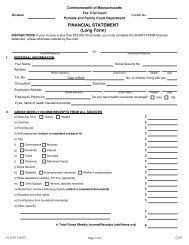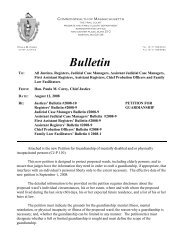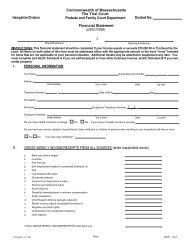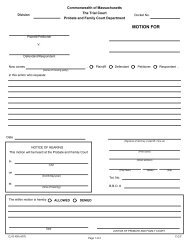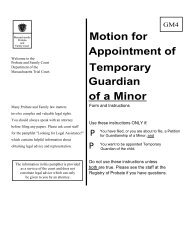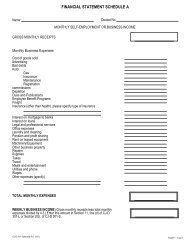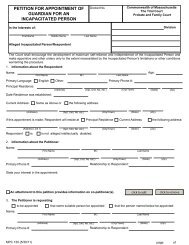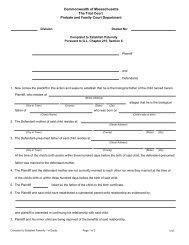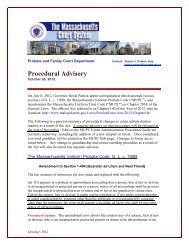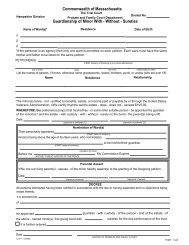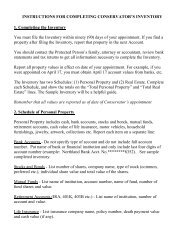Planning for Shared Parenting - Mass.Gov
Planning for Shared Parenting - Mass.Gov
Planning for Shared Parenting - Mass.Gov
Create successful ePaper yourself
Turn your PDF publications into a flip-book with our unique Google optimized e-Paper software.
<strong>Planning</strong> <strong>for</strong><strong>Shared</strong> <strong>Parenting</strong>:A Guide <strong>for</strong> Parents Living ApartNine to Eighteen MonthsBabyBetween the ages of nine and eighteen months, the transition from infant to toddlergradually takes place. There is great and rapid skill development, including motoraccomplishments (crawling, standing and walking), communication from sounds andsmiles to simple words, and beginning expressions of simple emotions (hugs, kisses,anger, fear and anxiety).Predictability and consistency remain important. Babies can respond to multiple nurturingcaregivers if there is sensitivity to their cues and needs, and regularity in their waking,eating, and sleeping schedules. Babies may continue to express fear and anxiety if a familiarcaregiver is not there to com<strong>for</strong>t them.Designing a Plan <strong>for</strong> this AgeIt is important <strong>for</strong> each parent to have the opportunity to:• Participate in daily routines such as feeding, bathing, napping, playing.• Have frequent contact with the child. Separations of more than three or four daysfrom either parent will interfere with a healthy attachment to that parent.• Establish similar routines in each home by creating a communication log to beshared between the parents that describes the child’s daily experience.If a parent has not been involved in caregiving previously, frequent short visits severaltimes weekly will help to develop a mutually secure relationship and allow the parent tomaster the tasks required in caring <strong>for</strong> a baby. Daytime visits may be lengthened gradually,and overnights added as the parent and child develop a stronger bond and the parent iscom<strong>for</strong>tably able to attend to feeding, bathing, diapering, soothing and bedtime needs.When both parents are working outside the home and a child is with a third-party caregiverduring the workday, many parents split the weekend and consider an additional one or twoovernights with the non-residential parent during the week as well as other mid-weekcontact. Although this is quite workable if the non-residential parent was “hands on” withchildcare when they lived together, parents should remain sensitive to the child’s responseto several caregivers and multiple transitions.If both parents participated in all aspects of childcare on a reasonably consistentbasis be<strong>for</strong>e the separation, the plan should allow <strong>for</strong> shared parenting tocontinue.10



